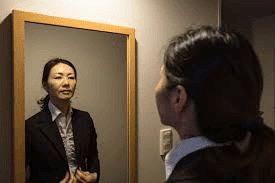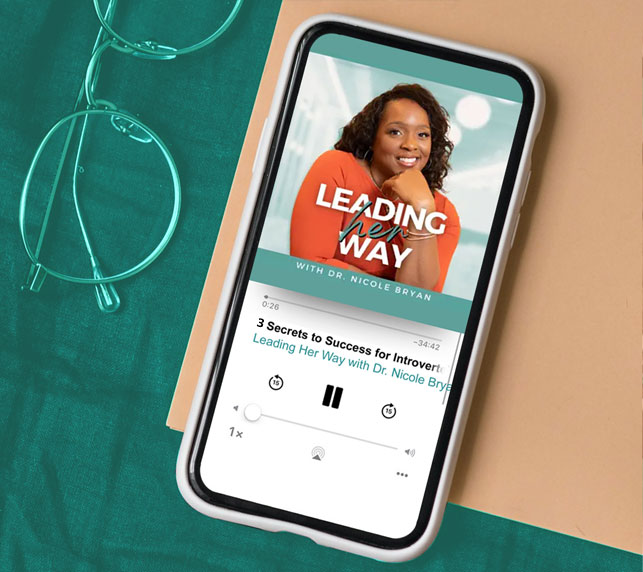Leadership Tip: Practicing self reflection helps leaders develop a better sense of self, improve decision making, and lead their teams more effectively.
Today, more than ever, the world is constantly changing – including the way we work and the way we lead others.
It can feel very overwhelming. Consequently, some find it easier to just keep on with what they are already doing.
To stick with existing routines, work, practices and not proactively think about the decisions they are making (or not making) and the implications.
However, there is very little growth or impact in only adhering to the status quo, as an employee or as a leader.
Amidst all of the competing demands, the better leaders are becoming much more aware of self and others. In other words, they are even more present and proactive despite normal routines and practices being disrupted.
“Without reflection, we go blindly on our way, creating more unintended consequences, and failing to achieve anything useful.” –
Margaret J Wheatley
What is Leader Self Reflection.
According to Reflection Psychology, self reflection is the capacity to exercise introspection and the willingness to learn more about your fundamental nature. It is the ability to acknowledge your thoughts and behaviors, the underlying reasons for them, and the impact they have on you and others.
And it is an extremely important skill in leadership and life.
Why?
Because growth and development doesn’t happen simply from the experience of doing.
In the world of work, the experience of doing counts for very little if you don’t also take the time to learn and understand “how” and “why”.
And take that forward with you as a leader so you can replicate the success, avoid pitfalls in the future, or transfer the learning and skills to a new situation or opportunity.
So, if self reflection is so useful, why don’t more leaders do it?
There are a few reasons. Most leaders:
- Oversubscribe to action.
- Don’t want to commit.
- Are fearful of the results.

A Quick Leader Self Reflection Story.
Several years ago, I coached a senior marketing leader at a global financial services firm. At the outset of our work together, he set a goal to be the Chief Marketing Officer within 5 years.
Further discussions revealed that he had a similar goal for more than a decade. This was the third lateral vice president move across three different companies in his quest for a Chief Marketing Officer opportunity, for which he had been passed over in his two previous companies.
My client, who was a very gifted marketing expert and an extremely hard worker, like many leaders focused his and his team’s energy solely on tangible deliverables.
When I initially encouraged him to incorporate reflection into his development, he quickly dismissed it with “I don’t have time for that”, “I just need to keep my head down and hit my goals” and “I’ve gotten this far in my career without doing that”.
His resistance was very strong and very real.
He was laser focused on obtaining a “chief” position, and viewed his way as the only way to get there. He could see that he was stuck in a series of lateral moves, but believed it was only because of external factors.
So what happened?
Because he wasn’t open to practicing reflection on his own, I incorporated it into our bi-weekly coaching sessions without labeling it “reflection”. We used the first 5 minutes of each session for him to contemplate and respond to three questions:
- Why do I want to be a Chief Marketing Officer?
- What feedback have I received in the past two weeks that will either help or hinder my quest to be Chief Marketing Officer?
- What have I learned about myself as a leader?
After about four months, he was reflecting on his own outside of our time together. He began sharing his observations and learnings without being prompted.
Then he had an epiphany. What he loved most about his work and what everyone felt he was good at was translating consumer insights into a strong brand promise. Moreover, he was most energized being close to the customer. And simultaneously acknowledged that Chief Marketing Officer would take him further away. Which ultimately led him to redefine success for himself.
There are several morals to this story.
However, the most important is that leader self reflection is a very powerful but underutilized tool.
It gives us the opportunity to question beliefs, understand our behaviors and impact on a deeper level, and to make the best proactive and conscious decisions for ourselves and our teams.
The reality is that there are many things in life and work that are beyond our control. Yet who we are and how we show up as professionals and leaders is completely ours to determine. Self reflection can help us constantly be better and do better in these areas.
Leader self reflection does not have to be complex, time consuming, or scary. In fact, you can still reap exponential benefits by establishing a simple and consistent self reflection practice.

Start Your Self Reflection Practice Today.
Here are a few self reflection tips that you can start using today:
Practice regularly.
A self reflection practice is built over time. It’s like any other skill where it is normal to start out feeling odd and uncomfortable. Yet the more you practice, the easier it will be. And the more benefits you will receive.
Since you know yourself best, pick a frequency that works for you. Weekly. Daily. Every other day. Any of those would work, if you remain consistent.
Place and time doesn’t really matter either. As long as you are undistracted for five to ten minutes.
For example, some of my clients practice in the office before starting their work day, or on their commute to or from work. And others reflect in the shower, during a workout, or as part of their nightly ritual before falling asleep.
Pick what works best for you.
Select 3-5 questions.
It is helpful for beginners to guide their self reflection with a few key questions. My favorite set of questions is:
- What worked well?
- What didn’t work well?
- What will I do differently?
Most of my clients appreciate the simplicity of it. However, what I like most is that these self reflection questions apply to a variety of situations.
If you are focused on a specific situation or goal, you can customize your reflection questions, just like my marketing executive client.
Hold yourself accountable.
A leader reflection practice should result in growth, development and change.
It is not enough to simply learn or have an “aha” moment. You also have to hold yourself accountable to apply those learnings. To act on your observations.
It could be a shift in the way you think or behave. It could be tangible or intangible. Or both. As long as you continue to evolve your thoughts and actions as a result.
“Follow effective action with quiet reflection. From the quiet reflection, will come even more effective action.”
Peter Drucker
Final Thoughts.
Once you build your self reflection muscle, you can and should adjust your questions and practice session to fit your needs. Continue to adjust these variables as you find your “zone”.
Most importantly, when your practice becomes more focused, your will experience deeper reflection. Going beyond the surface to the underlying root causes.
At that deeper level, there will be even greater potential for change and personal transformation.




Trackbacks/Pingbacks